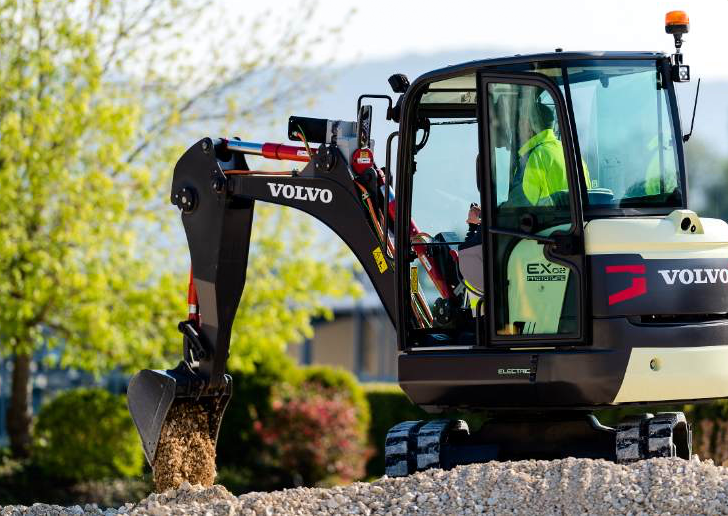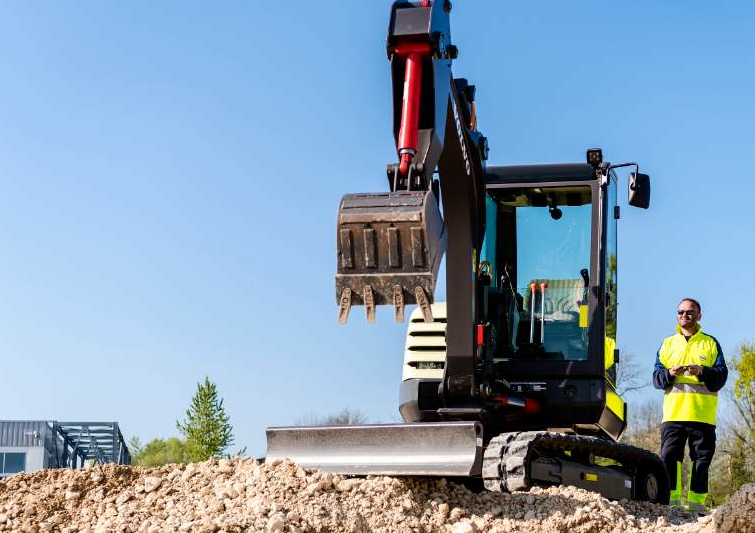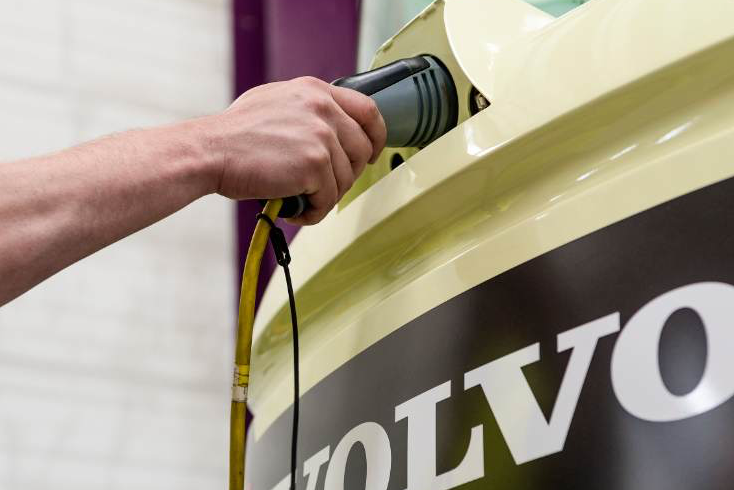Volvo EX2: World’s First Fully Electric Compact Excavator
BY AsphaltPro Staff

On May 16, Volvo Construction Equipment showed off a prototype of the EX2, a 100 percent electric compact excavator, at the Volvo Group Innovation Summit in London.
The EX2 is Volvo CE’s latest concept machine and, according to Volvo, the world’s first fully electric compact excavator prototype. It’s important to note that the EX2 is “purely a research project,” according to Volvo CE, with “no plans for industrialization.” However, it offers an interesting glimpse into a cleaner, more efficient future.
The Current State of Electric Construction Vehicles
A recent report from emerging technologies market research firm IDTechEx estimates that more than 165,000 fully electric machines will be operating in the construction, maintenance, agriculture and mining industries by 2027, as manufacturers like Komatsu, John Deere, Caterpillar, Volvo and others continue to push the limits of electric-powered heavy equipment.
As the world continues to urbanize and legislative pressures continue to mount, the report outlines, demand for machines that can operate with limited emissions and less noise will continue to increase.
The report, originally published in May 2015 and updated in May of this year, originally estimated the market would reach $30 billion by 2025. Its latest prediction estimates the market will reach $81 billion by 2027. This vast estimated increase is a clear indication that the industry is moving towards hybrid and fully electric heavy machinery more rapidly than previously expected.
It’s estimated that there are between 664,000 and 649,000 machines active in the construction market worldwide, with a significant portion of those being electric drive machines. But, this isn’t the same thing as a true electric vehicle, which is the direction the industry continues to inch towards.
 According to a report entitled “A Comprehensive Overview of Hybrid Construction Machinery” published in Advances in Mechanical Engineering in March of 2016, hybrid wheel loaders and excavators are among the most successful categories for the application of electric technology based on current market share.
According to a report entitled “A Comprehensive Overview of Hybrid Construction Machinery” published in Advances in Mechanical Engineering in March of 2016, hybrid wheel loaders and excavators are among the most successful categories for the application of electric technology based on current market share.
Hitachi launched the world’s first hybrid excavator back in 2003, and by 2008, Volvo had showed a preproduction prototype of its L220F hybrid wheel loader and Komatsu had developed the world’s first commercial hybrid excavator.
And, last September, Volvo CE unveiled its hybrid electric loader prototype, the LX1, which was capable of doing the same level of work of a wheel loader one size larger.
Now, Volvo Construction Equipment can claim the world’s first known fully electric compact excavator prototype.
How to Make an Excavator Fully Electric
As a fully electric piece of machinery, the excavator can perform all of its regular tasks while delivering zero emissions.
To achieve this, the combustion engine was replaced with two lithium ion batteries, offering a total of 38KWh. To give perspective, those batteries store enough energy to operate the machine for eight hours a day at what Volvo CE considers an “intense application, such as digging compact ground.”
To make the machine fully electric, Volvo CE also had to replace the hydraulic system with an electric system using electromechanical linear actuators.
Making those two changes—replacing the combustion engine and hydraulic system—has reduced the machine’s cooling needs and noise levels by a factor of 10.
According to EX2 Project Leader Ahcène Nedjimi, the prototype delivers the same power and force as its conventional counterpart, but also offers faster speeds in combined movements.
Powering the EX2 Prototype

On a 16 amp domestic grid it will take between eight and ten hours to fully recharge both batteries.
This prototype in particular offers modular power solutions, including a mix of at least one 600V 19kWh lithium ion battery paired with either a second identical lithium ion battery, a diesel range extender, or a fuel cell system. Or, it can be plugged into the grid for its power or to recharge.
“A diesel range extender would be ideal on a site that doesn’t have a charging infrastructure in place,” Nedjimi said. The time it would take to recharge the batteries depends on the available infrastructure, he adds.
“On a 16 amp domestic grid it will take between eight and ten hours to fully recharge both batteries,” Nedjimi said. “However, the batteries can take more power than this, so with a dedicated grid, which could draw more current, and a slightly adapted charger, you would be able to recharge the batteries within one hour.”
Although electric machines are pricier compared to traditional machines, as the cost of energy storage systems like lithium ion batteries steadily decreases over time, one can only assume we’ll see more prototypes, more research on these machines’ efficiency and durability, and—eventually—more electric options in the marketplace.
Although Volvo CE has made it clear that these machines won’t be available commercially anytime soon, some elements of their designs could make their way into existing product lineups.
